|
Dave Mastovich is the founder and CEO of Massolutions.
In this conversation talks about how he transitioned out of the corporate world into owning his own business and how he developed entrepreneurial tendencies while working in other businesses. Dave has been on the cutting edge of utilizing the gig economy to build his business and has inspired his team to be creative, loyal, and scrappy through trust and freedom. Never miss one of our best episodes by subscribing to the newsletter. Dave’s Challenge; Get comfortable in uncomfortable positions. The next time you catch yourself make excuses, take stock and redirect yourself. Connect with Dave Website dave@masssolutions.biz If you liked this interview, check out episode 269 with Brent Beshore where we discuss different styles of investing, the proper motivations for your work, and sustainable business models.
Underwritten by Piper Creative
Piper Creative creates podcasts, vlogs, and videos for companies. Our clients become better storytellers. How? Click here and Learn more. We work with Fortune 500s, medium-sized companies, and entrepreneurs. Sign up for one of Piper’s weekly newsletters. We curate links to Expand your Mind, Fill your Heart, and Grow your Tribe. Follow Piper as we grow YouTube Subscribe on iTunes | Stitcher | Overcast | PodBay
4 Comments
Bri Conley is the founder of No. 14 Boutique in Lawrenceville, one of the few shops bucking the trend of “The Death of Retail”.
How? By establishing great relationships with clients, staying on top of fashion trends to offer a distinct selection, and masterfully utilizing Snapchat and Instagram to create demand. In this conversation, Brianne explains how she used Snapchat & Instagram stories to drive demand, what she felt like the market was missing when she opened her store, and how she’s blending ecommerce with in-store experience. Never miss one of our best episodes by subscribing to the newsletter.
Bri’s Challenge; Show up in person to get what you want.
Connect with Bri Bri’s Instagram No. 14’s Instagram Website If you liked this interview, check out episode 295 with Nisha Blackwell where we discuss her handmade bowties business and episode 305 with Wendy Downs where we explore the blending of ecommerce and physical retail.
Underwritten by Piper Creative
Piper Creative creates podcasts, vlogs, and videos for companies. Our clients become better storytellers. How? Click here and Learn more. We work with Fortune 500s, medium-sized companies, and entrepreneurs. Sign up for one of Piper’s weekly newsletters. We curate links to Expand your Mind, Fill your Heart, and Grow your Tribe. Follow Piper as we grow YouTube Subscribe on iTunes | Stitcher | Overcast | PodBay
TRANSCRIPT
Watson: Thank you so much for doing this podcast. I'm really excited to be talking with you. Brianne Conley: Yeah, me too. Watson: Thanks for having me in your shop here in Lawrenceville, Number 14 Boutique. I think that the best place for us to start for folks is to have you talk a little bit about the inspiration behind starting a physical retail location in the 2000 knots. Brianne Conley: Yeah. I opened my business in 2014, right after I had graduated college. I graduated in May of 2014. We turn 4 on October 14th, so not so far away. I just wanted a space where people could come to buy trendy clothing at an affordable price. I didn't feel that there was that market here in Pittsburgh, and I knew that it was wanted. I worked in Nordstrom all through high school and college, and I felt that the trend product that was coming in was selling out so quickly. Then people always say, ‘Oh, I can't believe that it's already gone.’ Then basics would just sit there because nobody really gravitates toward basics. If you own them already and you replenish them, things like that. Then the trend product that wasn't affordable also, wasn't moving because it was trend. So you with trend product, you kind of get sick of it within I don't know, six months a year. So, trend products should be affordable- something that you can handle buying and only wearing for six months. I just wanted to create a space that, had those products for women. I wanted brick and mortar because I love brick and mortar, and we started there, I'm sure we'll talk about e-com, but we didn't lead into that for three and a half years. Well three years, I guess. Watson: When you talk about the basics, what you're basically saying is like a staple piece that is more or less a commodity across the different places. You might have the store that you go to for it. But, it's more or less the same thing everywhere versus trend, which is really tied to stylistic preferences and what's going on and kind of the broader trend. Is that a good explanation? Brianne Conley: Yeah. I would say in terms of basics, J. Crew would be a great example of that. You know, you just get your jeans, that they have the same fit all the time. The v-necks, white tee gray tee, the crew neck, you know, things like that. They always have them and they're great and everybody needs them. I wanted to create a space where you already had those things, but you need something on Friday to go out and on your first date, stuff like that. Watson: So one of the biggest things that's interesting to me in stories like yours is often that other people have an idea like how you had noticed, well, trend is working, we don't need the basics there. There's an opening here to go from idea, I see a need, I see a problem, to the personal agency of like, okay, I'm going to go execute on this. I'm not going to wait around for someone to do it too. What do you attribute that degree of agency to? I'm going to go make this happen. Brianne Conley: I attribute it to my parents, which I know sounds funny. My parents actually own this building, which is amazing. They kind of leapt on an opportunity to invest in booming Lawrenceville with the idea that they would have a permanent tenant, which is amazing. So I don't like the stigma. ‘Oh, your parents bought you a business.’ No, no, no. I pay rent here, and I was just lucky because I was able to get this space with my parents in operations of exactly what I would want it to be. So, this actually used to be a bar. The bar was straight down the middle. It went through three floors, four walls to get to the brick, like these fitting rooms weren't here, you know, all of that. I mean, we were just able to completely make the space where we wanted it to. I think that my parents knew that I wanted to do this. My dad is a business owner. He's also a small business consultant and he's an accountant. So having all those services for free is amazing. I'm his number one paying client. I think that he was just like, ‘if you don't do this now, you never will.’ A main reason too, is because I started right out of college. I was able to live at home and take no paycheck, which is huge because I think a big thing for people who are afraid to take the leap, they're like, ‘how am I going to make money initially?’ I didn't have to worry about that. Watson: So as you're getting it off the ground, I'd imagine that one of the biggest challenges, and you had a term for this, that I'm blanking on right now, but when you’re stocking your store with trend pieces, the trends are changing. So you're kind of buying one order, and when those sell out, it's onto the next order, which might be completely different. How did you go about finding those initially? Where did you source the products to fill the store? Brianne Conley: We went on buying trips to trade shows, which is basically what most specialty boutiques do. This is basically just not like Nordstrom. So a specialty store would be like any boutique that you go to a trade show. There's just showrooms. They do pop ups of all of their products. So, each brand will do it and there's a sample of each item and the colors they have. Then you just kind of go through that. There are minimums, and some people don't have minimums. I did a lot of homework before my first trade show. I actually printed out a list of every single brand. There are 12 floors at the trade show that we usually go to. I print out a list of every single brand, and I Googled every single one of them. Watson: Wow. So you came in with a game plan, like I need to talk to these 82 of 200 or whatever, correct? Brianne Conley: Yes. I would do that. I also had a little bit of background just having worked at Nordstrom, things like that. Just like I would say BB Dakota would be a brand that people would definitely recognize and Nordstrom does carry that. BB Dakota is actually the only brand that I still carry from the day I started. Watson: As you were getting this off the ground, I'm sure there were either maybe clients that you're used to engaging with at Nordstrom's or friends, or what have you, that you were kind of able to gain that little bit of awareness that you were starting this. But, how did you outside of, you know, people walking by get people into the store? Brianne Conley: Social media. Yeah. Social media has a huge impact on our business 100%. I think that it drives our business. I think that my clients have learned that I will be active on social media. So, they know if there's new things here, because there are always new things, but I always make sure to post if like I did a huge restock. They know, and they come and write in after I post that. Watson: Wow. Were you primarily using Instagram off the bat or has that been something you've transitioned into? Because Instagram is really what you're known for now. Brianne Conley: Yes. Now I'm most known for Instagram. I've always been active on Instagram, but where I started doing like a special kind of e-com was on Snapchat. It actually happened by accident when I was opening before we had the space to finish and it was all dusty and everything. We were shipping the product to my parents' house, and I would just snap on my personal Snapchat, ‘Oh my gosh, I love this vest’ or anything like that. My girlfriends would text me, ‘well, whenever your registers open, like, I want that. Let me know.’ I was like, ‘okay, cool.’ I think three months into opening, I just started doing it again. I would put it on Snapchat. Then I was selling things through Snapchat, which was really bizarre. So then we kind of created this animal where I had to try everything on, and then the girls would text the store. Our store phone is an iPhone, and they would text and we would keep their information on file. So we'd have clients who we regularly shop with. They would say, ‘hey, this sweater, this dress, this outfit,’ like, boom. We knew their size. We had their card on file. We ship it. All they'd have to do is tell us what they wanted. There was no mess of ‘I don't have my card on me.’ We got it for you. So we tried to make it easier for them. Then with the fall of Snapchat, we moved all of that to Instagram stories. Watson: Makes sense. For those that have not yet seen the stories on Instagram, one of the components is these try-ons that you're doing were more or less going through every single look of every single piece that you have come in the store/ most of them. Brianne Conley: I wouldn’t say every single. There's so much product in here, and for the amount that we replenish our floor, I think you spoke about it a bit earlier, we try to do more quality of new product than quantity of the same product. That's our model. The whole trend basis is that you don't own something that everybody else owns. So, we want you to be one of the 6, 12, 18 people. Because usually you get a product in increments of six, for the most part that has that item in Pittsburgh, and if you travel, even less, right? I'm sorry, what was the question? Watson: I actually blanked on the question myself. We're just going to keep moving through and talk about how that leads to demand for people wanting the pieces because if they know that it is that limited run, and people aren't coming in here for the basics. They're coming in here for a specific distinct look, and they have to keep coming back because it's going to be gone in I don't know, a week, a month-a very short amount of time. Brianne Conley: Usually that day. So that's kind of the animal that we have created. So, we do the trials on Instagram, and once Snapchat kind of faltered is when we noticed our views going down a lot. It was terrifying. It wasn't happening at a great time of year, either. It was happening during a transitional season, which is never great. July is a tough time because people are done buying Summer, but it's still like a hundred degrees outside, but we're getting fall products and they're not ready for sweaters. July, January is usually like that weird time where people don't really know what the heck to buy. I think it happened in July. I'm trying to think. Our views were down so much, like, all right, well, I have to take this to Instagram, but Instagram creates this environment where you don't leave the app. They have now taken on stories, all those things, and you don't leave the app to communicate. So with Snapchat, you were screenshotting, going to your messages, texting us. I didn't think that people would do that on Instagram because they have created the messages feature and the swipe up and all of those things. I didn't see my clients really leaving Instagram to purchase. So, we took a leap and literally in two weeks created e-comm- we just did it and it wasn't perfect. It still isn't. We're just learning as we go, but with e-com, it creates the ability for people to then swipe up, and they don't have to leave the app. They go to our website, but then it's easier. Watson: Makes sense. Another big trend on the show is basically the idea that from an outsider's perspective, it seems simpler than it probably is on the ground, on the inside. So can you take us a little bit through this transition from a retail first environment to where, not that e-comm is taking over, but it's now playing a bigger part of the business from a fulfillment standpoint, from getting those processes in place- what does that look like? Brianne Conley: Right. On Mondays, I come in and I film all the products for the week. So like you were asking, it is not every item in the store. It depends on the season. It's really easy with jeans and sweaters. Everybody buys a sweater cause it fits everybody. In the summer, dresses are tough because everybody is different, things like that. I come in on Mondays. I film the product. I usually am here in the fitting room for like three hours. We come in, and we also take product shots for the website so that the actual home page looks the same. We just use our little wall over there with the chairs and the florals in the background because this has become our signature and we just kind of flat lay it and hang it and make it look nice. Then on Tuesdays we upload all of the products for the week, for the most part. Sometimes we'll add a little bit if we have a huge shipment, and we know that like people will need it. If there's a concert or something like that, we try to be cautious of that. Then throughout the week, we upload what I've tried on, on stories- 2 stories in increments from Tuesday, Wednesday, and Thursday, Friday people usually aren't shopping online, neither on Saturday and Sunday. Watson: We see a lot, all our posts on Friday, we've more or less stopped even putting stuff out there. Brianne Conley: I actually used to think it was different. I was always like, ‘Oh my God, I'm posting on the weekends because people are hanging out.’ But I think that now with how normal social media has come, people are like, ‘okay, I'm going to disconnect.’ So, we don't post on Friday unless we post early while people are still at work. A lot of people, especially in the summer, they have like half day Fridays. They're out there at the pool by 12. We try to just do Tuesday, Wednesday, Thursday. Watson: Yeah. Now, when you're either not just choosing which styles to feature when you're doing the trials, but also you're going to all these vendors at these trade shows choosing what's going to come in, is that primarily based off of your tastes/your preference, certainly informed by what you're hearing from clients and customers that are coming in, but is that really the genesis of these trends? Brianne Conley: Yes, 100%. I am my client because I'm the age. So eventually we'll figure that out once I get too old, or maybe the brand will grow with me. My clients, like I am them. They have the same taste as me. I actually used to, before we opened, I thought Lawrenceville was so hipster. I was like, ‘oh, we gotta do like Brown leather.’ I think I'm too girly for it. We kind of bought for this Lawrenceville person we assumed existed. Then the products that we bought that we were like, okay, we're going to take a chance on this. It's really girly, but like, we'll see. All of that stuff is the stuff that's sold and the Lawrenceville product didn't because it wasn't what we believed in. I didn't believe in the product, and you can tell on my face if I don't like it. So realistically, I do not really try on anything I don't love. You can tell- the girls will be like ‘yeah, you can't put that on there, it's not cute.’ You know what I mean? Because it'll just show on my face. So yeah, I would say that it's pretty much like what I choose. Obviously there are styles that just do well all of the time, like any basic dresses, something that any girl can just like put on with sneakers and run to the grocery store. That's stuff that I don't necessarily walk home with, cause I already own it from seasons before, but there are things like that, that each woman needs to replenish in their closet all the time. They always do well. Watson: It's important not to diminish the significance of you having the taste that can actually drive an entire store to stay in business, like being able to choose the things that people will be interested in. Can you talk about how you develop that taste, like resources that you read when you were younger or now, or where you go to, to kind of inform your perspective? Brianne Conley: Yeah. Well, I think that going to trade shows really helps. Before you go to trade shows, you have sales reps that work with you for each vendor, and they will send you a look book, or what's called a line sheet, which is basically a PDF of all pictures on models of the clothing. So, you can realistically see trends almost instantly whenever you get those line sheets. So for instance, leopard is a huge trend for fall, and not just like a hint of leopard, like all over leopard, like leopard jeans, leopard, overall separate jacket, like. Leopard. I was laughing. I've probably got line sheets for fall six months ago. I was laughing with a few of my girls. I was like, this leopard is outrageous. I didn't buy any of it. I was like, they are really going in for this. Two weeks ago, I wrote an order for like five of those separate pieces. You have to kind of see how the trends evolve. So it's very obvious whenever you get those line sheets, what the trends are, and it's up to you to decide to delve in, or kind of wait for it. I've done both, and both have succeeded and both and have failed. I was kind of curious how people would feel about this leopard, but now I'm seeing it all over bloggers all over, you know, the runway. I mean, it's everywhere. Now, I really want those leopard jeans. They're coming now. We ordered them, but it's just things that you just kind of have to test. I think that with social media, you can see how the trends are evolving too. In my opinion, you can see what the bloggers are wearing, and then all of a sudden you can just kind of stock up on those things because that's what people love is cell phones. Watson: Makes sense. It's much more, what I'm hearing is, maybe more than I was imagining, it's responsive to the demand that you're seeing, as opposed to like everyone coming this way and being in the exclusive position. Brianne Conley: Right. I mean, in some trends, the public doesn't get them for a while. Culottes, which are like short, wide leg pants, they're capris, I guess. I remember three years ago, I was on a buying trip, and one of my brands who's probably my most trendy brand had them. I said to my sales rep, I was like, ‘these are so cool.’ I thought they were awesome. She was like, ‘you've gotta be kidding. I mean, you're the only person to say that today.’ She's like, ‘they're so weird.’ I put them back because I was like, no, one's going to like these. Then, the next year, everybody had culottes. Everybody was buying them, and I bought them every time. They do so well now, they still exist. All the jumpsuits are made into culottes now, instead of jumpsuits, because you don't have to deal with length and all this stuff, but you know, sometimes it takes a little while for people to really understand the trend. Watson: Makes sense. As you've engaged more of the eCommerce side of being on Instagram and playing that part of your business, has that decreased the amount of people that come into the store? Brianne Conley: No. That's kind of whenever we were just doing Snapchat, we would talk, and of course, my dad's a numbers guy and he's like, ‘you know, it bums me out because I wish that we could see a way that Snapchat affects your numbers’- the actual numbers of the difference it's doing in store versus on Snapchat, but all of the sales were technically in store on our point of sale systems. He's like, it's tough to see. It would never be a true measurement because when we were posting things on Snapchat, when we post things online, now, it brings people in because they know that we have a new product. People that are local know that what's on our website is only 20% of what's in the store. If I have a huge restock, they know to come in, and if there's a lot of good products on our website or on Instagram that day, they know ‘oh, I gotta go.’ I would say on a slow day, it definitely helps. We will push more products on the eCom side that way so that we have a good numbers day. In terms of people coming in here, no, I'm a huge proponent of brick and mortar. I think it's very important. Watson: Yeah because that's the other thing, as I was coming in to talk with you today is there's this media narrative or meta trend of like ‘retail's dying, Amazon's eating everything.’ What I came in most curious about is, I mean, it's clearly not the case here. It wasn't even a question of was the business doing well? It was apparent. I talked earlier about my girlfriend working at Stitch Fix, and then even just looking at your Instagram account, like how many people I know who follow the account and how relevant it is even like a microculture center. I just think it's fascinating that it's still possible and people still want the experience. I'm sure another part of it is coming in and either interacting with you or the team when they come in here. What do you think about that? Brianne Conley: Well I have two girls. I own the store with my mom. So she's here, I'm here. Then we have two girls, Anna and Allie, that have worked for me for three and a half years now. The four of us, we're like a team. We are like best friends. We all get along. They all know my clients, and my clients know them. So we know their style, things like that. We have another girl, Jessica, who just started she's on the weekends. She's great too. She's learning everything. I mean, like, we are very much a culture here where like, we don't do that catty BS girl stuff. We just get along and like to have fun and make fun of each other. I think that shows like in our clients, you know? So on a Saturday when it's beautiful, we'll open the door. We'll blast like Michael Jackson, we dance, like people come in, we're like, ‘Hey, come on in.’ We have donuts on Saturdays when we know it's busy. I think that we want people to hang out here. We want people to come in. We love getting to know our clients. I feel like some of my clients are my best friends that I never would have met if it weren't for this place. Then, back to Amazon swallowing everything, they are. Trust me, I love Amazon prime. I think that their business model is insane. I also think that because of social media and because of all these things, people are also lacking human interaction, but they want it. I don't think people struggle to want to come in here. People crave just wanting to talk to somebody anymore because nobody talks to each other. Watson: We've experienced very similar stuff. I have a Facebook group called ConnectionU. We host an event called the Going Deep Summit in January. That was the thing that almost revealed itself, like you were tricked by the narrative of where everyone just wants to be in the app. Everyone wants quick, fast, and easy. There is a deep yearning for human interaction. Even being able to talk it through, you can't necessarily, you can with your friend send it via text, what do you think of this? But actually being in the space with someone trying it on, it's almost impossible to replicate that. Brianne Conley: That's the thing, I don't think retail is going to die. I really don't. I don't like that narrative, and I agree with things to be fast and easy. One click buy on Amazon is genius. That's why I also said I don't think people are going to leave the Instagram app to purchase. We have to make this easy. I think when it is online, it does need to be easy. We're trying to do things that make our online easier to, we're stuck in a point of sale system contract that we're trying to get out of and like, things like that. We want to make it easier, but when you're in the store, you know, people want that. You have to try things on, you want to feel the product you want to talk to the people you want to create those relationships. Watson: So talk about something like that. The point of sale contract for someone who maybe hasn't opened a retail location before, what have you learned about a point of sale system not necessarily meeting the needs that you have? Brianne Conley: Yeah. So, our point of sale system we've had since we opened, and with retail itself, it's actually fine. We never had a problem with it, which is why whenever I think we were in a two year contract with them, and then when they called to renew, we're like, ‘yeah, let's do two more.’ I think half a year into that is when we started e-com, so we don't have to, but we choose to use the same platform on our e-com that we do in our store so that our inventory is the same. For instance, like if something gets purchased online and someone's trying it on in store, like we need to know that it's happened probably a handful of times, but it does happen. We didn't want it like us just being like blind to it with a different POS system. With our online system, it's just so confusing. It's hard. I don't think it's super user friendly for the client. It's not user friendly at all for us. It's so roundabout, things like that. The good thing about it is that, you know, if someone is looking to do a point of sale system, you have to look at your credit card expenses and the charges that they charge you for using credit cards. There's is the lowest. We don't use Shopify, so if someone is doing retail, Shopify is a huge thing, but their credit card process, I think is out of control. It's like 5% and then 30 cents per charge. So, if you have more transactions than you're paying, it seems a little off to me. Watson: It's like you're working 5% of your business for them. Brianne Conley: They're not doing anything. You're doing all of the work. I don't know, my dad and my brother are accountants, and two of my brothers and they're like, ‘that just doesn't make sense to me. Can you do anything with your point of sale system to make it work a little bit better?’ So we're trying everything we can, but it's not easy to work with. Watson: If anyone out there is listening, not necessarily like, I want to open a small boutique, but I want to open some sort of physical retail location, whether it's a restaurant or a clothing store, what have you, how much stock would you put in them having an initial a social media presence of substance before getting something like this off the ground? Do you see an avenue by which you could have launched this if there wasn't that already present demand or at least association with fashion that you had? Brianne Conley: So you're asking like how much inventory should they.. Watson: Not so much inventory. If I want to open my pizza shop, and I just have zero presence whatsoever, do I need to spend six months making a bunch of posts, not just exclusively about pizza, but about food and just getting some attention there so I can drive demand? Brianne Conley: Yeah. 100%. I think people need to understand who they're talking to. I think that they need to see why you care. So it would be weird if you want to open a pizza shop and all you ever did was post about hot dogs. Right? Which is very bland, but you know what I'm saying? You need to post about your passion for pizza and having my friends over tonight, and saying we made pizza, things like that. Obviously your personal relationships are important too. I think people like to see what you do. I also post on my personal social page a lot, and I think the people enjoy seeing things like what I do when I'm not here. You know what I mean? I think that people like to see who's behind the business. Watson: That's a really big concept. It's actually one of my favorite posts, it's called ‘Naked Brands.’ It's this whole idea that pure, bigger fans of LeBron James than the Cleveland Cavaliers or Casey Neistat than his company, 368. Is that what it is? 368. It's always about this person more so than the brand that tops. That to me seems like the biggest, the other big edge that you have is that I'm coming here cause it's Number 14, but I'm also coming here to see what Bri and the team are bringing me. Brianne Conley: That's so important, and I care so much about that as a business owner. I follow some of my favorite designers. I follow the brand, but then I also follow the designer because they want to know what they are doing. I think it's so cool to see like where they vacation, which I know sounds so dumb, but I'm like why this time of year? Is this slow for them? As opposed to so busy for me, but I see designers on vacation a lot right now, because they've like done their time. Their products are out for Christmas and I'm just getting it, and I find it fascinating to see what the people are doing behind the brands. Watson: That's another big thing. I mean, even with the podcasts, I'll tell guests before we come on to just tell the story, just say what's going on. Even embedded in that story, like when this person's posting that they're in The Bahamas. They can think, well, I'm at the beach, but you're actually taking something from that story from the meta narrative that they might not even not know that they are teaching you. Brianne Conley: Right. I think that people also create their own stories about people. Things are different than they are how I created in my head. I'm sure that people, I follow them, I think that they're like this, but who knows if they even are? That's just the evil and the amazing thing about social media. Watson: So how does it work in terms of ordering? Like you said, you're just getting the stuff now. What's a basic timeline of orders to arrive for a specific season? Are you one season ahead to three? Brianne Conley: So, right now, I'm writing deliveries for March. Stocktober. I'm buying for two seasons ahead, but technically I'm not. We're living in fall, but the clothing that's arriving now is holiday. Watson: Because of what's in the store now we'll kind of take you through the fall. Is that what you're saying? Brianne Conley: Right. So, yes. So, this is October, it's fall, and right now, we've been getting fall products since July. We will start getting holiday, like we have started to get holiday because you start buying to wear holiday for like October, November, December. Gotcha. Then in December, we get spring. What is in here is usually what you can wear for like two months, three months realistically, but yeah with Pittsburgh weather, who knows? You can realistically wear the sweater you bought today into March. I would say it's usually six months ahead that I'm buying, then we get it like within two months, I would say. But right now, what we're getting is wear now because of fall holiday. Watson: So another thing that you mentioned is that you're about to celebrate the four year anniversary of the store, and even four years ago, you were kind of seeing a lack of this type of experience in the market. I would say, two of the things, my girlfriend came here from Boston, and she was like, not very into five years ago staying in Pittsburgh, and in this last half a decade, the food and the fashion scene has kind of turned over a new leaf to a point degree. Do you spend a lot of time looking at the competition in the region? How do you think about Pittsburgh as a city with a fashion sense has changed. Brianne Conley: Pittsburgh's really cool. I know that people don't think it is, but it's so cool here. I love it. I grew up here. I went to school in North Carolina, and it was without a doubt that I was going to move back. I actually didn't love Lawrenceville. Whenever we were opening here, my mom was Hell bent on Lawrenceville. My dad was hell bent on Lawrenceville, and I was like, ‘oh, okay.’ I wanted something a bit more quaint. I was really interested in Sewickley, and my parents were just like, ‘no I feel like you need to go somewhere where everyone's like flocking,’ which is Lawrenceville. I mean, even four years ago, the evolution of Lawrenceville is insane. There were two restaurants or something. I remember our good friends came in to visit for our one year anniversary and they were kinda like ‘oh,’ and then they were just here like a few weeks ago and they were like, ‘Holy heck, like this place is amazing.’ The buildings to go up and in every store, there are no vacant storefronts really anymore. I mean just the evolution of all of it makes me proud to have like a part of it. As a business owner, I love it as a person who also lives in Lawrenceville. I semi-love it because I'm sick of no parking, but you know, I feel like it has its pros and its cons, but I do think that Pittsburgh now is so cool. I think it's evolving. It still is. I don't like when people say it's up and coming. Cause I feel like it's up and come, but I think it's continuing. Watson: Absolutely. I dig it. Bri, this has been fantastic. I want to aim towards wrapping up here, but before we ask our standard last two questions, is there anything else you were hoping to share today that I didn't give you a chance to? Brianne Conley: I don't think so. This was fun. Watson: Then we need to make sure that people follow you on Instagram and all the other social media platforms. Can you give us the digital coordinates at which to do so? Brianne Conley: Yes. So my business is no14boutique.com. You can find us on Instagram at @no14boutique. My personal Instagram is @BriConley. Beautiful. We're going to link that in the show notes, going deep with aaron.com/podcast is the place to find it or in the podcast app where you're listening to this now. As we do at the end of each conversation, I want to give you the mic one final time to issue an actionable personal challenge for the audience. Brianne Conley: Yes. My actionable challenge would be that if you are looking for a job or if you would like your resume to be put in front of somebody, I would definitely recommend that you put your face in front of them. I think it really helps to create like, kind of taking off of our conversation, it really helps to take your face and put it in front of somebody and create that human interaction. Watson: What is an example of a time that you have done that and it has made the difference when calling wasn't working or something? Brianne Conley: Yeah. I'm a big phone call person, especially with my sales reps. I don't do the email thing. I call, put a voice. Tone is a huge thing for me. I just wanna be like, ‘Hey, like I'm not trying to be a jerk, but like, where's my product. Is that right? Yo, where's my stuff.’ I need a tracking number. But, when I worked at Nordstrom, I was actually the youngest employee in the store at the time. By like five years, I started working there, and I was 17. I wanted to work there so badly, but I knew that my resume would just go into the interwebs of like that black hole of like ‘submit your resume here.’ I went up to one of my favorite sales associates and was like, ‘who's your manager? Who can I talk to?’ I went dressed all cute and just kind of told them I really want to work here. ‘I know I'm young, but I think that I could really help this area,’ you know, this little department. He was like, ‘okay, come in for an interview tomorrow.’ It's happened several times, and my parents have always been huge proponents of doing stuff like that. Watson: It's underrated how big of a difference that makes because you don't realize how few people actually take that extra step. Brianne Conley: It's unbelievable. Even for me, people will email or write to me on Instagram, my personal Instagram, are you hiring? Why don't you come in and talk to me? The answer is no if you message me on Instagram, but if you put your face in front of me, maybe I could see what type of hustle you have. Watson: Absolutely. Yeah, I dig it. This has been fantastic. Thank you so much for taking some time. Brianne Conley: Thanks for having me.
Amir Banifatemi is the General Manager for Innovation and Growth at XPrize and is an Executive Advisor for the IBM Watson AI XPRIZE & the ANA Avatar XPRIZE.
Prior to joining XPRIZE, Mr. Banifatemi began his career at the European Space Agency and then held executive positions at Airbus, AP-HP and the European Commission division for information society and media. He’s previously managed two venture capital funds and contributed to the formation of more than 10 startups with emphasis on Information Technologies, Telecommunications, IoT, and Healthcare. We talk about how the XPrize stimulates innovation, what the Avatar XPrize is pursuing, and how the teams in the competition are formed. Never miss one of our best episodes by subscribing to the newsletter. Amir’s Challenge; Think about how our human evolution will look over the next two decades. Discuss this with others so we can call have a better future. Connect with Amir Avatar.xprize.org avatar@xprize.org If you liked this interview, check out episode 240 with Kenny Chen where we discuss the impact of the AI XPrize, establishing a network in a new city, and Thrival 2017.
Underwritten by Piper Creative
A digital agency that provides strategy, delivery, and analysis specializing in a few key service offerings. Documentary-as-a-Service (Vlogging 2.0) Instagram Content Production & Account Building Podcast Production, Strategy Consulting, and Guest Acquisition If you aren’t creating or curating content regularly, your clients and customers might forget you’re open for business. YouTube Subscribe on iTunes | Stitcher | Overcast | PodBay
Michael Hruska is a technologist with experiences spanning across standards, emerging technologies, learning, and science. He is a former researcher at the National Institute of Standards and Technology and now provides technology, business model and innovation solutions to Fortune 500, government and startups.
His team has built award winning products and delivered solutions that support millions of users. Michael is an advisor/mentor to ed tech startups for GSV Capital. Michael hosts a monthly entrepreneur meetup and other events to support local and regional entrepreneurship. He serves as a mentor and guide for a number of startups. He also serves as an advisor the Robert Waters Trust Fund at the Community Foundation of the Alleghenies to support entrepreneurship and early stage companies. This conversation runs the gamut from small town business to organizing a band to eating with Frank Zappa. Never miss one of our best episodes by subscribing to the newsletter.
Mike’s Challenge; Go do something new, with new people, in a new place. Get uncomfortable.
Connect with Mike Food Facebook Channel Problem Solutions Website Books Mentioned Rocket Fuel: The One Essential Combination That Will Get You More of What You Want from Your Business by Gino Wickman Traction: Get a Grip on Your Business by Gino Wickman If you liked this interview, check out episode 131 with Larry Gioia where we discuss #ABCD, Connection University, and how to make introductions for others.
Underwritten by Piper Creative
Piper Creative creates podcasts, vlogs, and videos for companies. Our clients become better storytellers. How? Click here and Learn more. We work with Fortune 500s, medium-sized companies, and entrepreneurs. Sign up for one of Piper’s weekly newsletters. We curate links to Expand your Mind, Fill your Heart, and Grow your Tribe. Follow Piper as we grow YouTube Subscribe on iTunes | Stitcher | Overcast | PodBay
There are plenty of things computers can do better than humans. Looking up patents is certainly one of them.
Sandra Mau is the founder & CEO of TrademarkVision, a startup doing visual brand protection. She and her team of machine learning engineers are developing a top visual search engine for trademarks and logos. In this conversation, we talk about why she has another office in Australia, how the algorithm simplifies work for IP lawyers, and shares stories of scrappy startups at events. Prior to starting TrademarkVision, Sandra was a Senior Computer Vision Research Engineer at NICTA doing R&D in computer vision, machine learning, and mobile projects. Never miss one of our best episodes by subscribing to the newsletter. Sandra’s Challenge; Think about where you want to be in 5 years and then break it down into actionable steps you can take to accomplish it. Connect with Sandra Trademark.Vision Designs.Vision If you liked this interview, check out episode 334 with Alison Alvarez where we discuss geospatial data, finding a cofounder, and being a modern polymath.
Underwritten by Piper Creative
A digital agency that provides strategy, delivery, and analysis specializing in a few key service offerings. Documentary-as-a-Service (Vlogging 2.0) Instagram Content Production & Account Building Podcast Production, Strategy Consulting, and Guest Acquisition If you aren’t creating or curating content regularly, your clients and customers might forget you’re open for business. YouTube Subscribe on iTunes | Stitcher | Overcast | PodBay
Dr. Gina Marchando is the executive director at DreamLife Recovery, a new addiction treatment program in Donegal, PA.
Gina has been treating patients for trauma, PTSD and the full spectrum of dissociative disorders for more than a decade and came back to Pittsburgh to after losing her nephew to an overdose. In this conversation, we talk about addiction, psychotherapy, and the small steps we can all take to care for others. Gina is particularly excited about the wide array of evidence-based treatment options that will be available at the new facility and the impact it can make on the region. Never miss one of our best episodes by subscribing to the newsletter. Gina’s Challenge; Go out of your way to be kind to someone today. Connect with Gina Website 1-833-330-LIFE If you liked this interview, check out episode 151 with Dr. Matt Keener where we discuss psychiatric health, the impact telemedicine will have on accessing healthcare, and the Pittsburgh ecosystem.
Underwritten by Piper Creative
Piper Creative creates podcasts, vlogs, and videos for companies. Our clients become better storytellers. How? Click here and Learn more. We work with Fortune 500s, medium-sized companies, and entrepreneurs. Sign up for one of Piper’s weekly newsletters. We curate links to Expand your Mind, Fill your Heart, and Grow your Tribe. Follow Piper as we grow YouTube Subscribe on iTunes | Stitcher | Overcast | PodBay |
Show NotesFind links and information referenced in each episode. Archives
August 2023
|
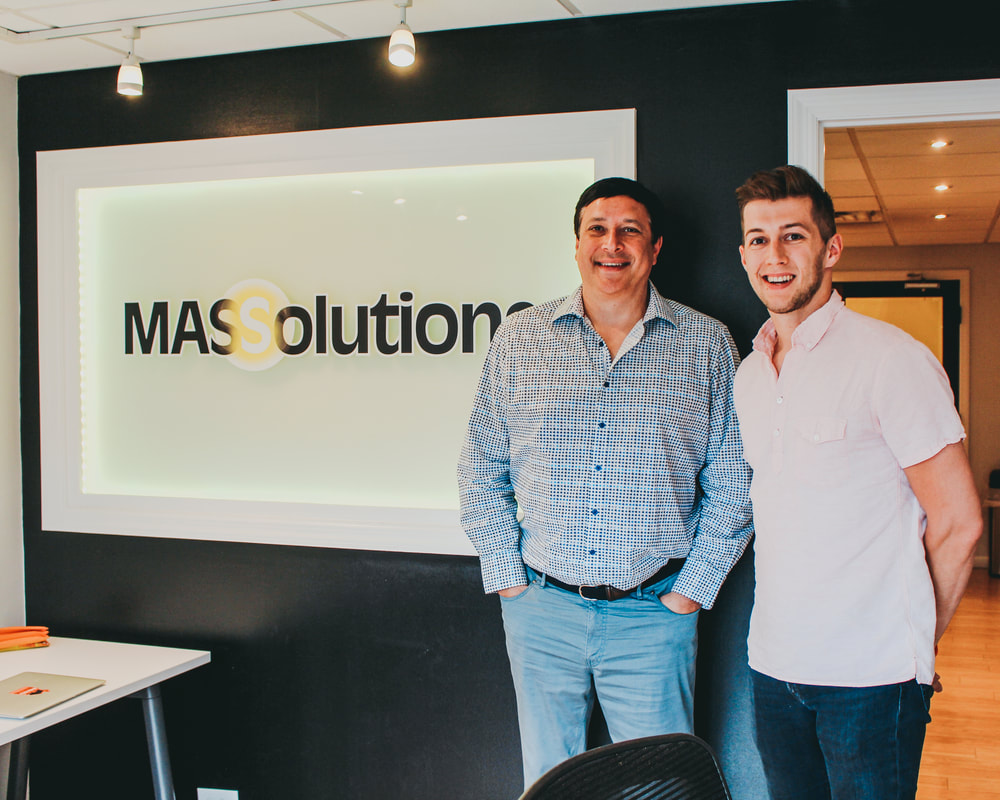
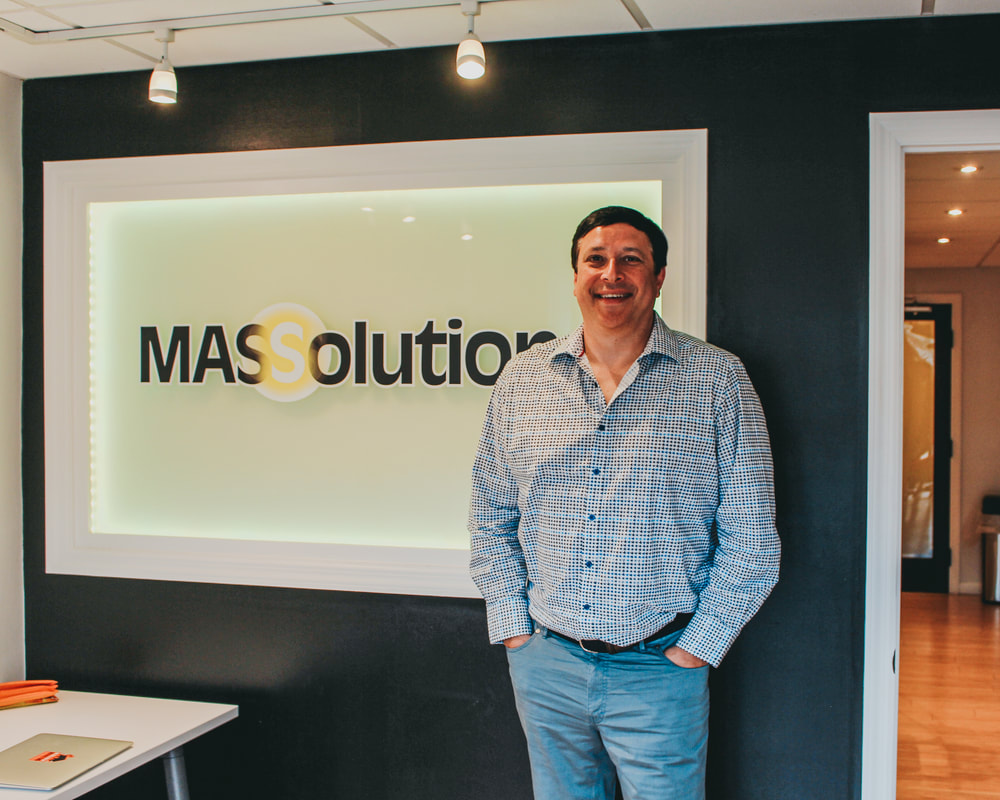
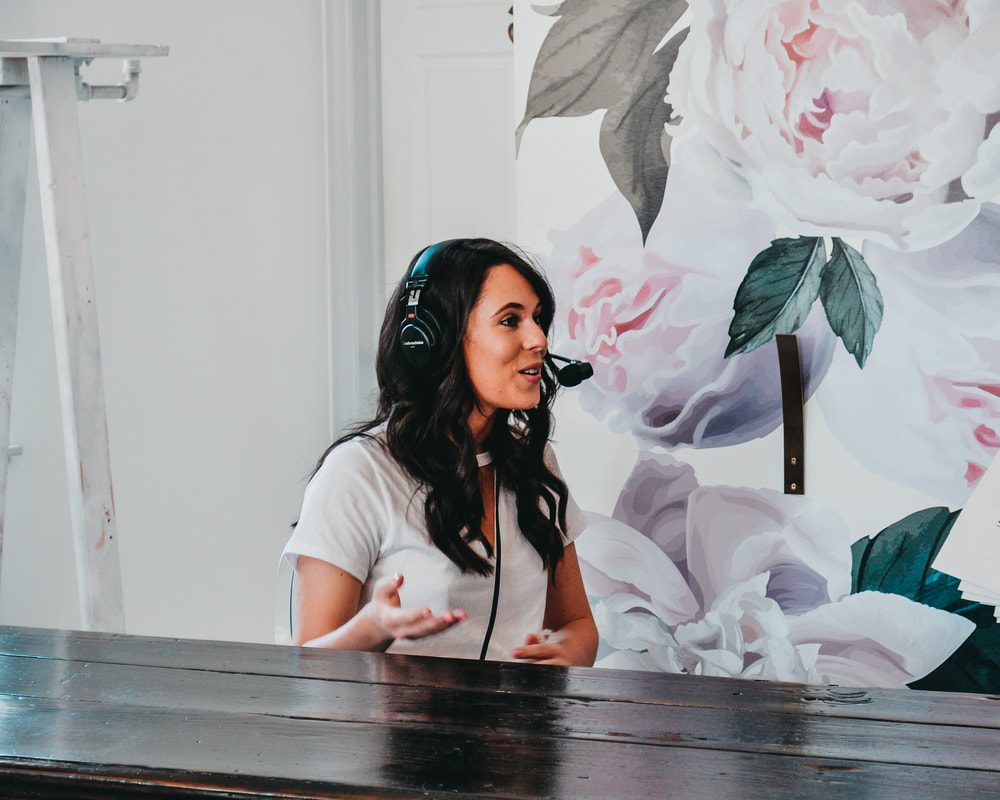
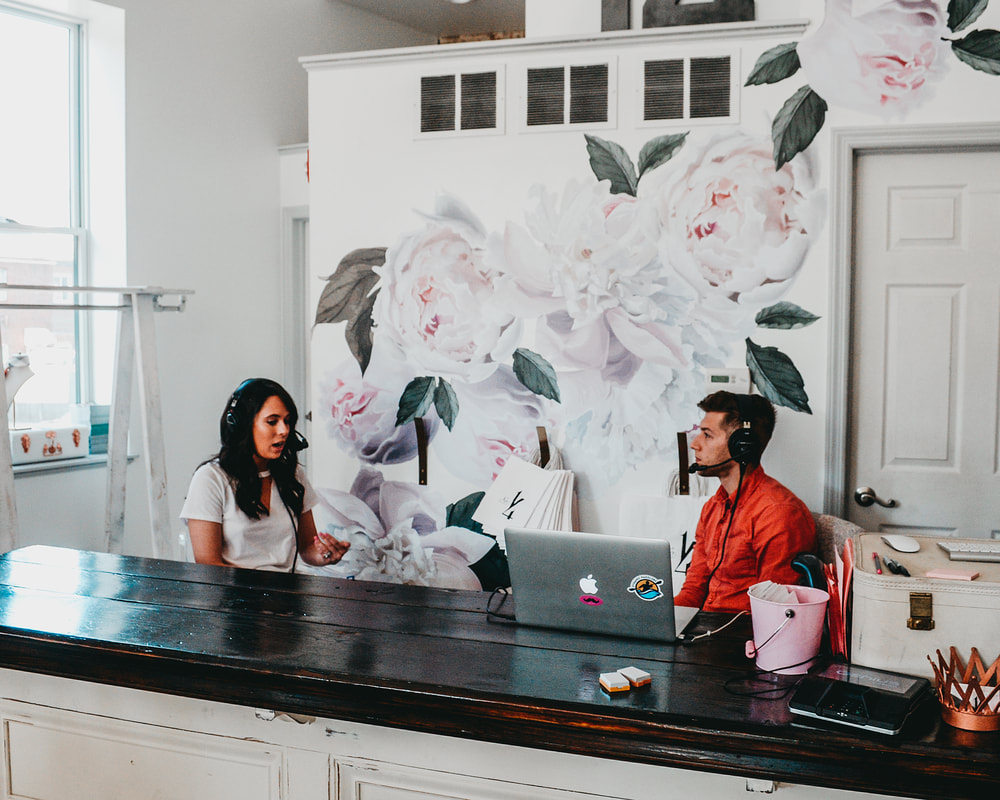
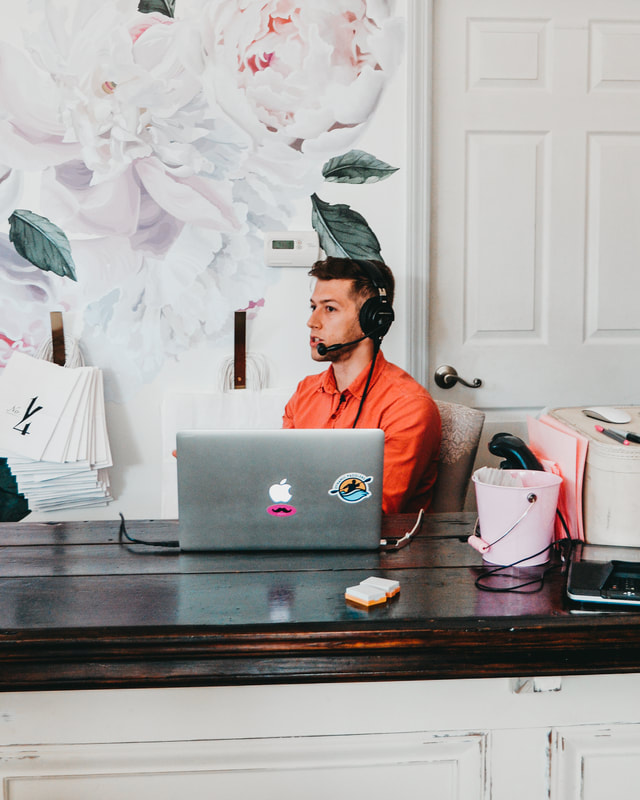
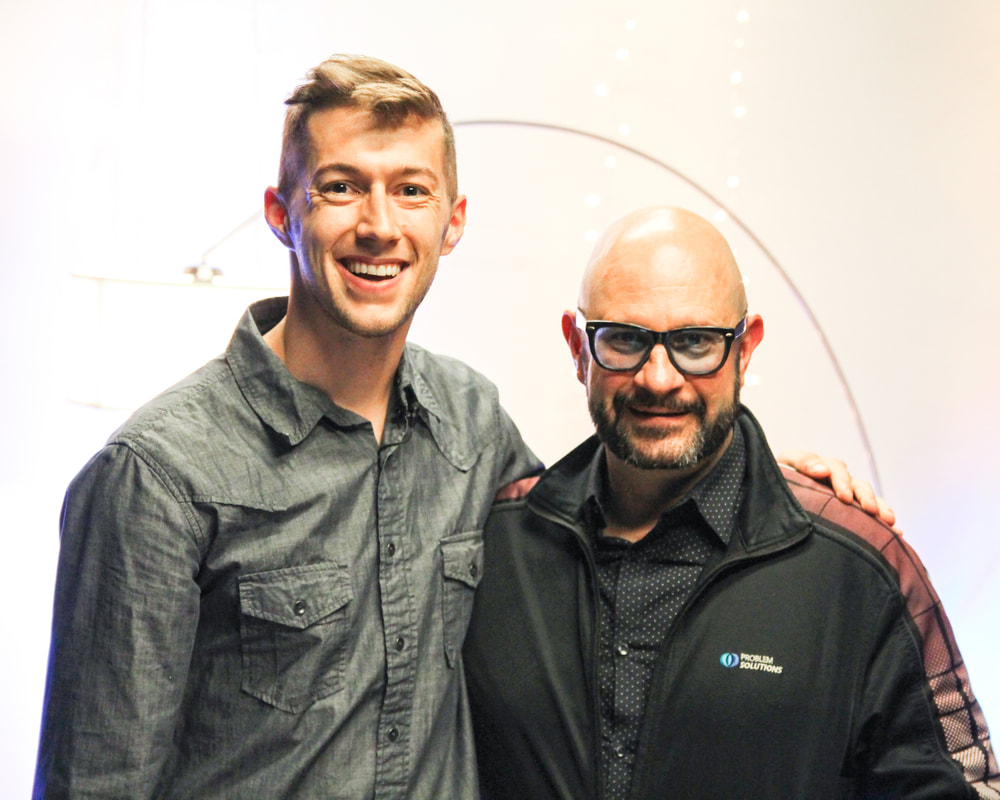
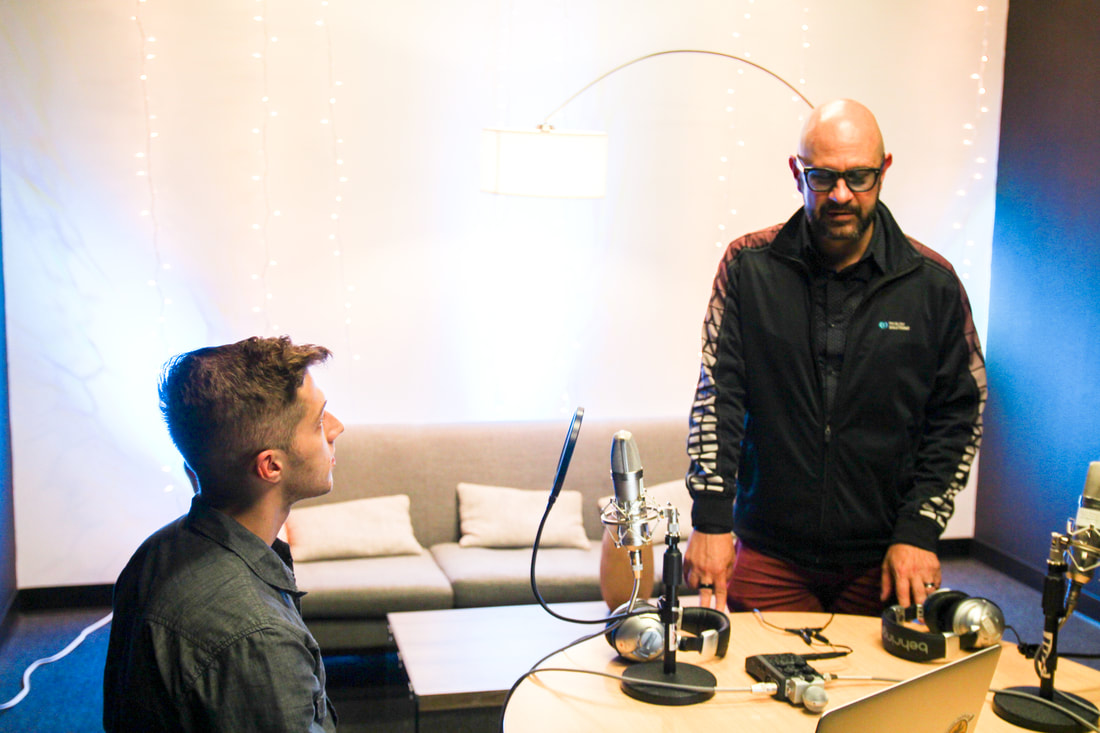
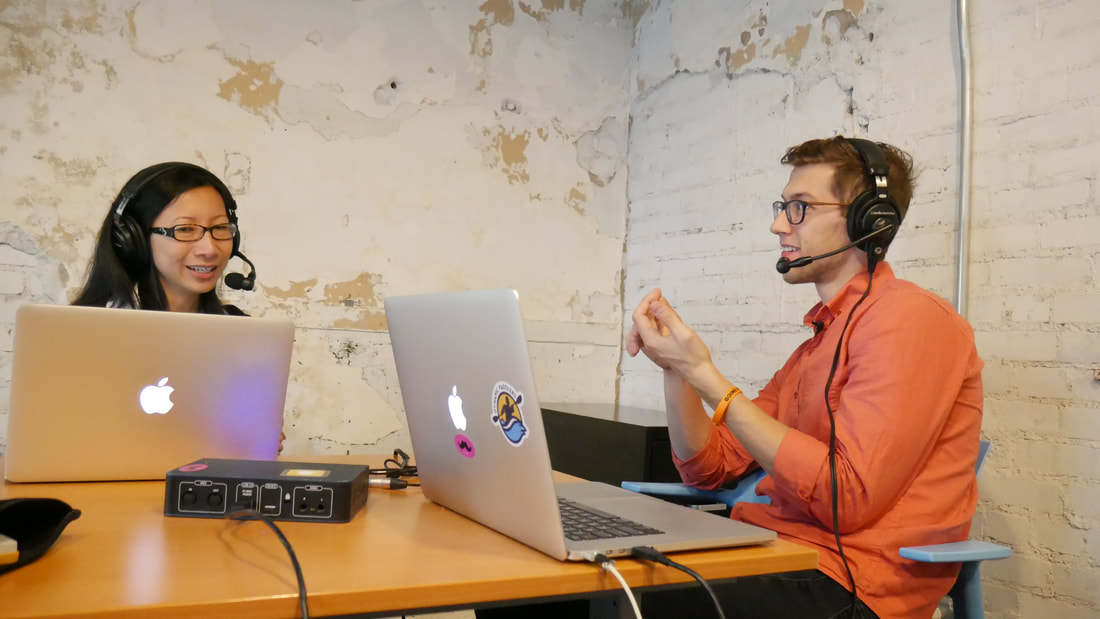
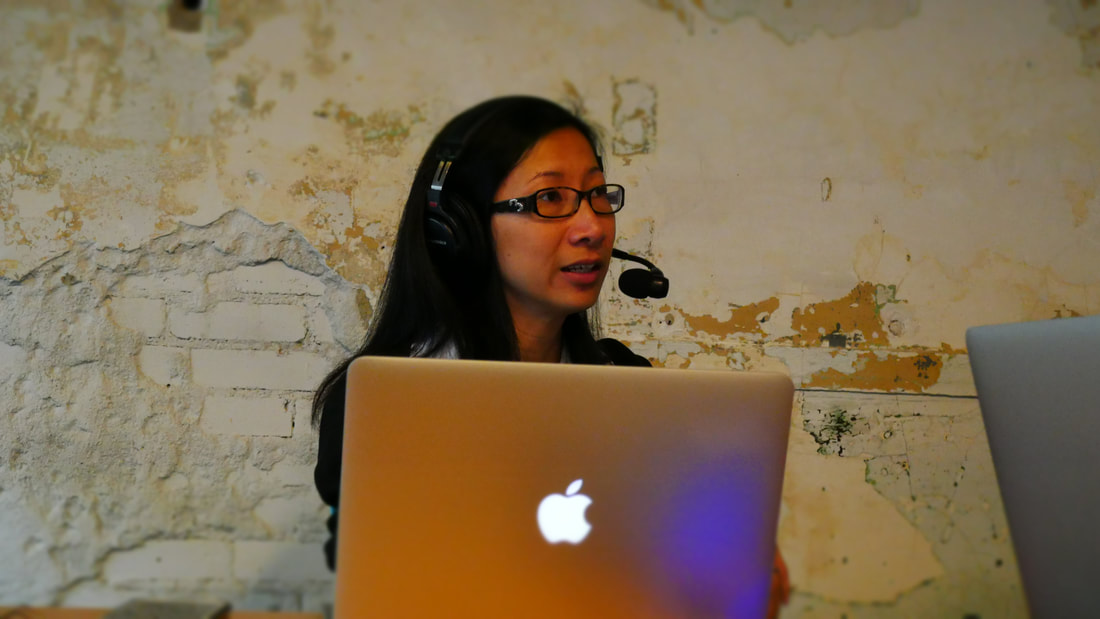
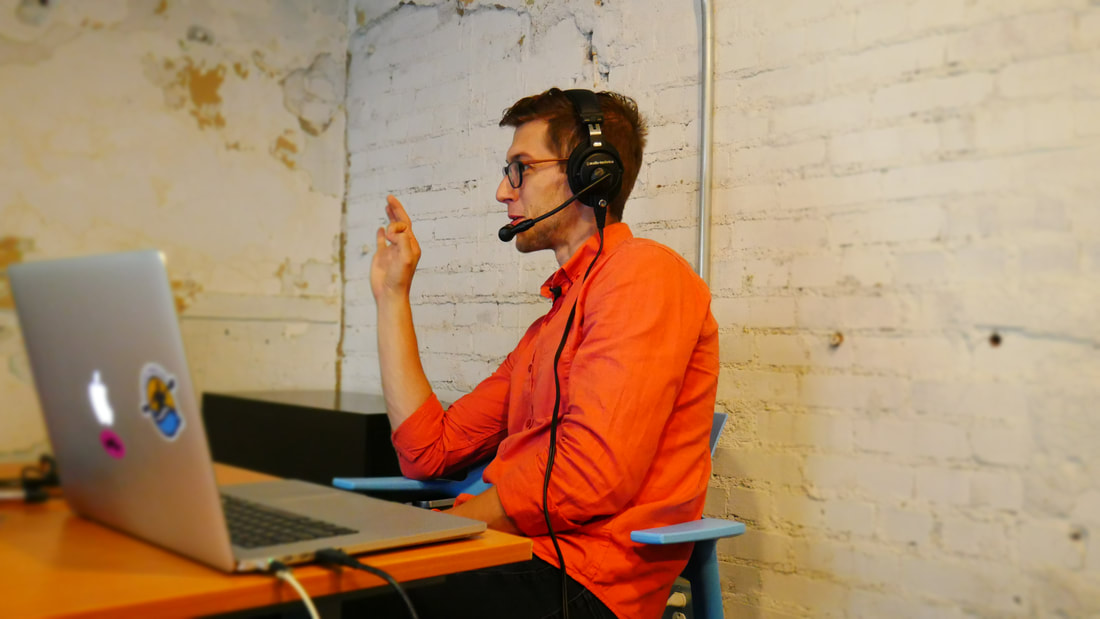
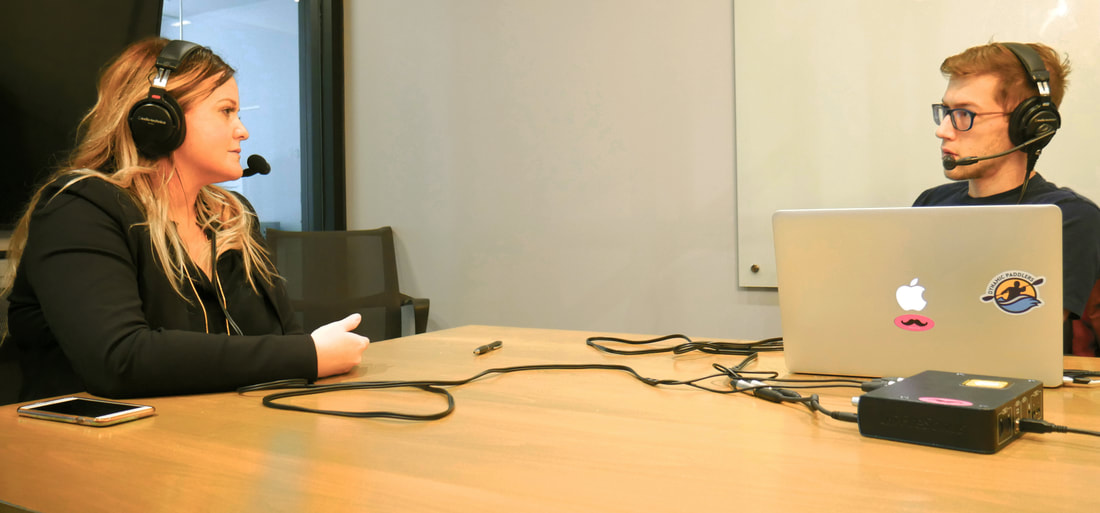
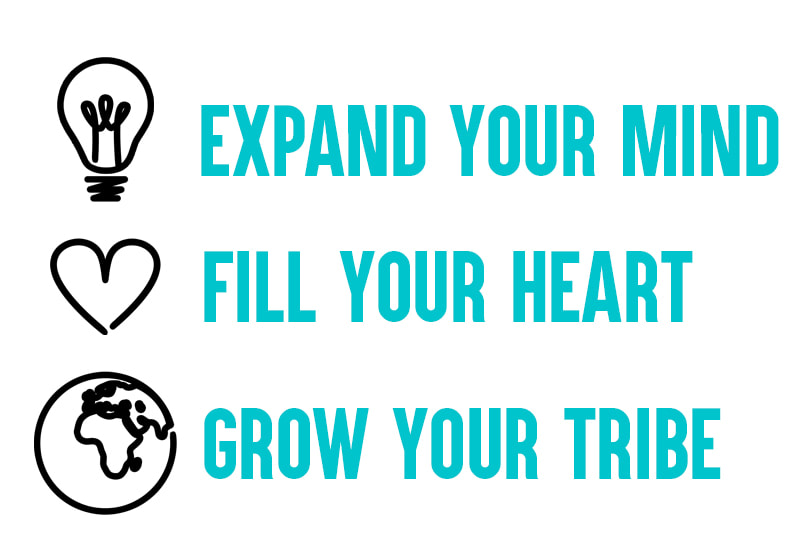

 RSS Feed
RSS Feed